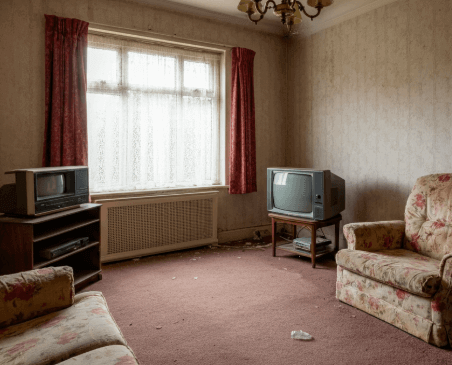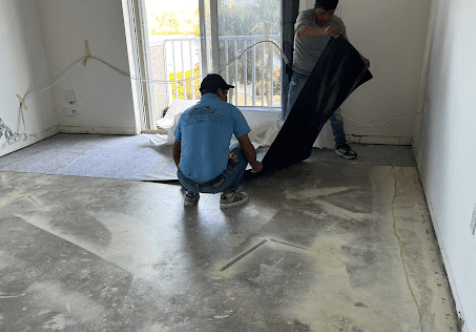In today’s fast-paced real estate market, one term that often comes up but isn’t always well understood is Functional Obsolescence in Real Estate. This concept can significantly affect property valuation, selling, and buying, making it a crucial topic for real estate investors, property managers, appraisers, and anyone involved in the Florida real estate scene, whether they’re selling or buying a house. Understanding functional obsolescence in real estate and how to manage it can be decisive in navigating the complexities of the current market.
Functional obsolescence in real estate refers to features within a property that diminish its overall value due to outdated or less desirable elements. Real estate investors like Steve Daria and Joleigh often encounter this issue when assessing older properties, as these outdated features can impact their investment decisions and potential returns. Addressing such obsolescence is crucial, as it can significantly influence a property’s marketability and long-term profitability.
What is Functional Obsolescence in Real Estate?
Functional obsolescence refers to features within a property that are outdated or no longer meet the needs and preferences of current buyers.
This can manifest in various ways, making it essential for property owners and investors to recognize its signs and implications.

Signs of Functional Obsolescence
Outdated Architectural Designs:
- Overly compartmentalized layouts.
- Lack of open-concept living spaces.
- Example: A house with small, separate rooms instead of a spacious, open floor plan.
Impractical Floor Plans:
- Excessively large or small rooms.
- Awkwardly positioned bathrooms.
- Inefficient use of space.
- Example: A property with a bathroom located far from the bedrooms.
Technological Advancements:
- Lack of modern amenities and infrastructure.
- Absence of smart home features, energy-efficient systems, or high-speed internet connectivity.
- Example: A house without central air conditioning or smart thermostats.
Building Materials and Construction Techniques:
- Older properties may have higher maintenance costs, lower energy efficiency, or environmental sustainability concerns.
- Example: A home built with single-pane windows and poor insulation.
Get An Offer Today, Sell In A Matter Of Days
Identifying Functional Obsolescence
The first step in effectively managing functional obsolescence in real estate is identifying its presence within a property.
This process requires thoroughly evaluating the property’s design, layout, and amenities to identify areas where functionality may be compromised or outdated.
Common Manifestations
Obsolete HVAC Systems:
- Older HVAC systems may need more energy efficiency, resulting in higher utility costs and decreased comfort for occupants.
- Example: A property with a 20-year-old furnace and no air conditioning.
Insufficient Electrical Outlets:
- Properties with limited electrical outlets may need help to meet the demands of contemporary living.
- Example: A house with only one electrical outlet per room makes charging multiple devices difficult.
Inadequate Insulation or Inefficient Windows:
- Poor insulation or drafty windows can compromise energy efficiency and indoor comfort.
- Example: A home with single-pane windows that cause significant heat loss in winter.
Strategies to Combat Functional Obsolescence
Addressing functional obsolescence involves proactive steps to modernize and update properties to meet current market demands.
Here are some effective strategies:
Upgrades and Renovations
One of the most direct approaches to addressing functional obsolescence is through targeted upgrades, remodeling, and renovations.
This could mean anything from modernizing the HVAC system to reconfiguring an awkward floor plan.
The goal is to align the property more closely with current standards and buyer expectations.

Repurposing Spaces
Sometimes, a space’s function within a property becomes obsolete.
In such cases, repurposing these spaces to serve more modern needs can be a cost-effective strategy.
Transforming a formal dining room into a home office or a multimedia room can significantly increase a property’s appeal and value.
Leveraging Technology
Incorporating smart home technology can breathe new life into an otherwise functionally obsolete property.
Features like smart thermostats, security systems, and energy-efficient lighting are increasingly in demand and can make an older property more appealing to today’s tech-savvy buyers.
Example of Successful Mitigation
A 1970s suburban home with an outdated floor plan and no modern amenities underwent a renovation that included:
- I am reconfiguring the kitchen and living area into an open-concept space.
- We are installing energy-efficient windows and insulation.
- Smart home features like a programmable thermostat and a home security system are added.
Understanding the Impact of Functional Obsolescence on Value
Functional obsolescence can notably impact a property’s market value, making accurate appraisal essential.
Appraisers consider this factor by comparing a subject property with others with modern features, determining how much value the obsolete features detract from.
Managing Expectations and Marketing
When marketing a property facing functional obsolescence challenges, how you do it can make a significant difference.
Highlighting the property’s potential for customization or emphasizing other selling points like location or unique architectural elements can attract buyers who see beyond the obsolescence.
Example of Effective Marketing
A realtor successfully sold a mid-century home with outdated features by:
- Highlighting the large lot size and prime location.
- Showcasing the potential for customization and renovation.
- Offering virtual staging to help buyers visualize modern updates.
Legal and Regulatory Considerations
When planning renovations or upgrades to address functional obsolescence, it’s critical to be aware of legal or regulatory considerations.
This is especially important in areas with strict zoning laws or historical properties where changes might be restricted.
Compliance Tips
- Research Local Regulations: Understand zoning laws and building codes in your area.
- Consult Professionals: Work with architects, contractors, and legal advisors to ensure compliance.
- Permits and Approvals: Secure all necessary permits before starting renovations.
Conclusion
Managing functional obsolescence requires a keen eye, an understanding of market demands, and a strategic line of action for renovations and upgrades. Whether you’re a real estate investor, a property manager in Florida, or looking to buy or sell a home, recognizing and addressing functional obsolescence can decisively influence your success in today’s market. With the right strategies and a proactive mindset, the challenges posed by functional obsolescence can be turned into opportunities for growth and profit.
**NOTICE: Please note that the content presented in this post is intended solely for informational and educational purposes. It should not be construed as legal or financial advice or relied upon as a replacement for consultation with a qualified attorney or CPA. For specific guidance on legal or financial matters, readers are encouraged to seek professional assistance from an attorney, CPA, or other appropriate professional regarding the subject matter.

